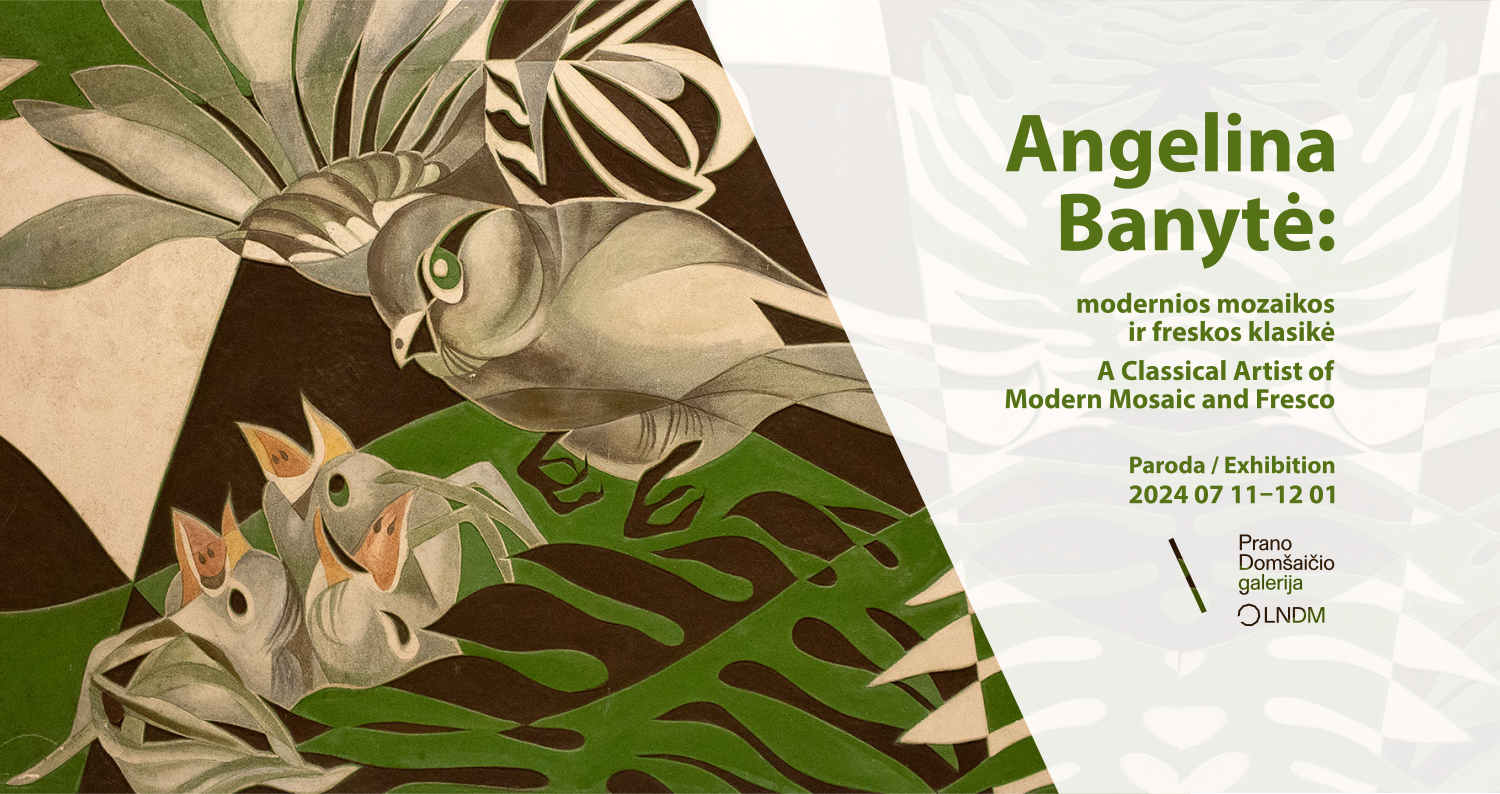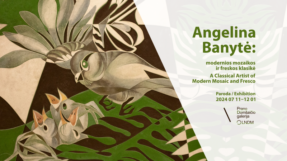Angelina Banytė: the Classic of Modern Fresco and Mosaic
11 July - 1 December 2024
Fate was generous to Angelina Banytė (b. 1949): she studied in the third intake of the students of Mikalojus Konstantinas Čiurlionis Secondary School of Art, graduated from it in 1968, and her diploma work was supervised by painter Vytautas Ciplijauskas. At the Lithuanian State Art Institute (currently Vilnius Academy of Arts) she studied fresco and mosaic under Professor Sofija Veiverytė. The artist took over her teacher’s style of masterful drawing, precise and expressive, and perfected it in her specific way, creating a distinctive sense of architectonic thinking and space. While still a student in 1973, Banytė created an impressive fresco entitled „Celebration“, which unfortunately did not survive the reconstructions at the Lithuanian State Art Institute. That year, she began to participate in art exhibitions.
After graduating from the Institute in 1974, the artist was looking for a place to settle down, to establish her living and working conditions. In 1976, Alfonsas Žalys, the legendary patron of the city of Klaipėda, invited the talented woman artist to come to the port city, gave her an apartment and a workshop, and thus created conditions for her to live and create. The year 1978 was an important one in the artist’s life when she held her first solo exhibition and was accepted into the Lithuanian Artists’ Union.
Banytė belongs to the generation of monumentalist painters who, figuratively speaking, did not need an easel. She stood in front of the wall as others stood in front of an easel. A couple of square metres is not a lot for a master of pure painting, while for the monumentalist Banytė the usual average format is about 15 square metres. There are truly a lot of walls on which monumental paintings, frescoes, sgraffitos and mosaics were slowly born, as far as technology and creative powers allowed.
The works on display in the exhibition belong to the author, and are borrowed from the collection of the National Art Museum of Lithuania, as well as from the National Mikalojus Konstantinas Čiurlionis Art Museum, Klaipėda Drama Theatre, and the Klaipėda Branch of the Lithuanian Artists’ Union, and private collections by Birutė Jokužienė, Edmundas Kolakauskas and Giedrius Lukaševičius.
Curator Ramutė Rachlevičiūtė
Coordinator Aurelija Malinauskaitė
Exhibition architect Ieva Glumac
Designer Loreta Uzdraitė
- Purchase an e-ticket for this exhibition
- Book a guided tour of this exhibition by phone +370 46 410 421, email domsaicio.edukacija@lndm.lt
- Plan your visit to the Pranas Domšaitis Gallery
33 Liepu st, LT-92145, Klaipėda, Lithuania
++370 46 410 412
domsaicio.galerija@lndm.lt















